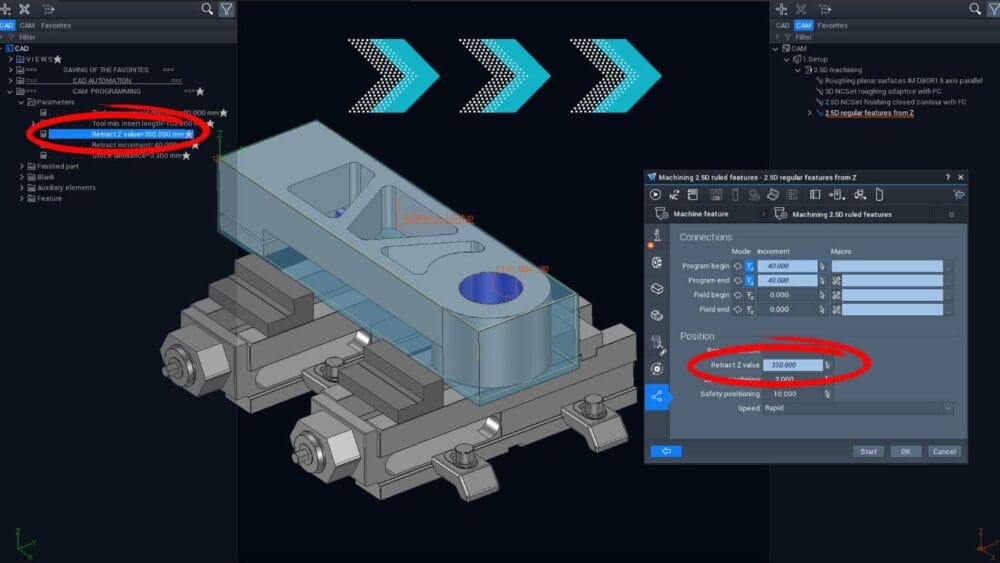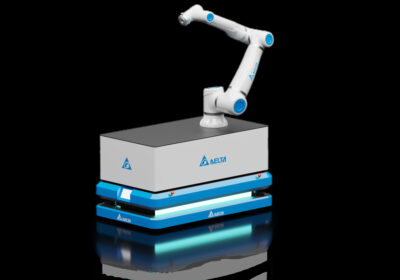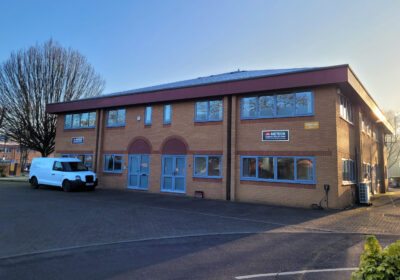Tebis CAD/CAM/MES is pleased to confirm that Tebis 4.1 Version Release 8 is now available. The new release gives you many new features and extensions offering even more automation for design, data preparation and CAM programming.
A special highlight is interpolation turning, which can manufacture rotationally symmetrical areas on many milling machines, quickly, easily, efficiently and at low cost. This modern manufacturing method creates entirely new opportunities for you to extend your portfolio and cover more of your customers’ requirements. Tebis is also the only CAD/CAM system on the market with 6-axis simultaneous interpolation turning in its portfolio: This enables even faster manufacturing of undercut areas at outstanding surface quality.
Your benefits with Tebis 4.1 Release 8
- Even more automation in design and data preparation: Create and link parametric character strings
- Automatically generate surfaces in reverse engineering: Create high-precision approximation surfaces faster
- Combine CAD and CAM better than ever: Automatically link CAD and CAM parameters
- Highly automated yet flexible programming: Extract and modify individual NCJobs
- Multi-axis simultaneous milling: Precisely control machine axes and tool direction for even better surfaces and shorter machine run time
- Easily create complex NC programs: Automatic avoidance in the Z direction
- Indexed collision avoidance: Optimized residual stock machining
- Top performance: Even faster calculation of residual stock machining
- Faster machining when roughing: Increase individual tool feed
- Complete support for interpolation turning: For machining on milling machines as well, including 6-axis simultaneous interpolation turning for outstanding surface quality
CAM – Automation
Control CAM programming with CAD parameters
Tebis software takes the next step towards combined CAD/CAM technology by enabling targeted control of CAM programming via CAD parameters: CAD object parameters can now be directly linked to CAM parameters. They can be numerically defined geometric properties like length and height. Many of Tebis’ customers define specific formula-based “control parameters,” which simplifies design and data preparation. In Release 8, these results can be transferred directly to the CAM world.
Your benefits:
- Faster CAM programming
- Simplified template technology with CAD and CAM
CAM – Maximum flexibility in programming with machining sequences and free-form features
Automation jobs for machining 2.5D free-form features and for 2.5D and 3D machining sequences (NCSets) can now be broken down into individual NCJobs. Quickly and easily modify NCJobs after the fact, add new jobs or change the machining sequence – regardless of whether or not the NCJob has already been calculated.
Your benefits:
- Respond quickly and ensure process reliability from the programming office when there’s a change in the work situation in the machine pool
CAM – Milling
Multi-axis simultaneous milling: Precisely control machine axes
The movements of the pivot and rotation axes can now be specifically controlled for multi-axis simultaneous milling with no additional design work. For example, an axis can be completely clamped and the movement of the second axis can be interpolated between two angles. Interpolation is possible in the milling direction and in the path direction.
Your benefits:
- Maximum flexibility
- Appropriate for all tool types and machine kinematics
- Homogeneous machine movements resulting in higher surface quality
- Simplified simultaneous 5-axis programming
- No additional module required

CAM – Turning
In addition to turn-milling and mill-turning, Tebis now supports interpolation turning – including the fantastic highlight of 6-axis simultaneous interpolation turning that’s unique on the market.
Iterpolation turning permits turning operations on all machines with a position-controlled spindle, including milling machines. This method is especially appropriate for parts with many milled elements and fewer turned elements. The part holder remains rigid. The cutting movement is in a spiral in the X, Y and Z directions around the rotation axis of the part geometry.
Interpolation turning delivers time savings of 80 percent: for example, areas that previously had to be milled can be turned now.
6-axis simultaneous interpolation turning is perfect for producing undercut milling element areas easily and efficiently in a single setup. These areas can be machined using very short tools and the spindle interpolates smoothly, resulting in even better surface quality: the ideal technology when precision is paramount.
CAD – 3D design
Create and link parametric character strings
In addition, text parameters can now be created, edited and configured using formulas for any character string. They can be linked with text, bore and pocket functions and in variant tables and controlled with strings.
For example, the part can be labeled based on the dimensions of the part envelope.
Your benefits:
- Time savings thanks to greater automation
- Simpler data preparation
CAD – Reverse engineering
Automatically generate surfaces on meshes
Planar surfaces and free-form surfaces can now be automatically calculated on meshes without having to first design an area on the reference geometry.
The result is high-precision approximation surfaces that can be linked together and then edited parametrically for subsequent processes. The surfaces can also be automatically aligned, which results in geometries that are ready for manufacturing at the click of a button.
Your benefit:
- Generate high-precision approximation surfaces faster







